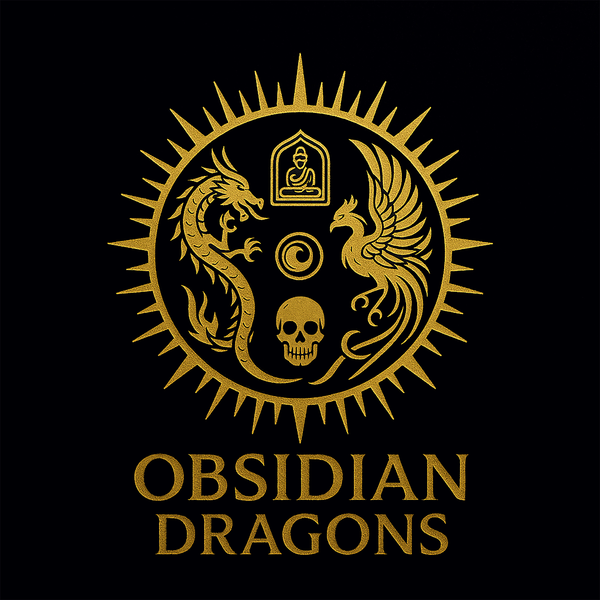AAA
Buddha pendant. Handmade Manjushri bodhisattva tangka. Bail Garuda
Buddha pendant. Handmade Manjushri bodhisattva tangka. Bail Garuda
Couldn't load pickup availability
Tibetan Buddhism protection amulet bodhisattva of knowledge Manjushri (description below)
Size: 76.5/44/7.6mm. weight of 76 grams
Buddhist collector's item, rare and exceptional.
Completely artisanal work
925 silver hallmarked according to international standards.
HANDMADE TANGKA PAINTED ACCORDING TO THE ANCIENT TRADITIONS OF REGONG ARTS
Genuine traditional Tangka Regong The tangka is painted at the temple of Longwu, also called Wutun.
Tibetan lamasery located in the Tibetan prefecture of Rebkong, province of Amdo, called Huangnan in the province of Qinghai in China and is 186 km from Xining.
Renowned center for Tibetan thangka painting. Regong arts were inscribed in 2009 on the representative list of the intangible cultural heritage of humanity. The colors of this tangka are made up of pure gold and crushed minerals.
rotating dharma wheel on the back thanks to a precision ball bearing developed in Germany.
Agate called nan hong (southern red) from Yunnan in closed setting in the eyes of Garuda and on the back of the pendant.
Natural turquoises from Hubei province also set on the wheel of dharma
As a gemologist graduated from the National Institute of Gemmology (ING), Paris, France. All our materials are appraised and certified by us
The protective windows are made of leuco sapphire like high-end watches
Aries representing Garuda
Garuda, fabulous bird-man of Hindu and then Buddhist mythology, son of Kashyapa and Vinatâ and brother of Aruna, the charioteer of the god Sûrya. It is the vahana, or mount, of the god Vishnu. He is also considered the king of birds. In Tibet, Khyung (ཁྱུང) is the Tibetan name for the Garuda. Coming from India, it was assimilated to the khading of the Bon religion, the golden horned eagle. The black garuda is a deity of the Nyingmapa school of Tibetan Buddhism who is held to suppress ailments caused by naga and earth spirits. It is featured on the Lungta. It is represented in Shambhala iconography by Chogyam Trungpa for whom it is associated with significant speed and power. Like the phoenix, it rises from the ashes of destruction, it is indestructible.
Sent in a luxurious box,
the amulet is hung on a mala of 108 celestial eye obsidian beads 8mm in diameter, carnelian, royal amber and sacred Tibetan agates called DZI
MANJUSHRI
Manjushrî was a disciple of Shakyamuni of whom he is, with Samantabhadra, one of the acolytes in the groups of images called in Japan Shaka Sanzon, "the three venerable ones of Shakyamuni".
It is “He whose beauty is charming”, the Bodhisattva “of marvelous virtue and gentle majesty”. Important in Mahāyāna and Vajrayāna Buddhism.
He is invoked for, among other things, success in studies. It represents wisdom, intelligence and the power of the spirit. “Her worship confers Divine Wisdom, Dharma mastery, faithful memory, mental perfection, eloquence. He would have delayed his accession to the state of Buddha indefinitely, moved by an infinite compassion which pushed him to remain in this world until there was not a single being left to bring on the path of enlightenment. supreme.
He is the protector of people born under the sign of the hare/rabbit.
The two main emblems of Manjushri, the bodhisattva of wisdom, are the flaming sword and the sutra of perfection, in his left hand, near the heart. The flaming sword represents Manjushri's penetrating intelligence, which cuts through all illusions, revealing the empty nature of everything. The sword represents above all wisdom, the discernment that tears the veils of ignorance. Manjushrî would have been the initiator and master of the Buddhas of past ages.
It should also be that of the Buddha of the future, Maitreya. "Manjushrî is the father and mother of the Bodhisattvas, and he is their spiritual friend." The Buddha Himself describes Manjushrî and praises him in the Manjushrîparinirvâna-sûtra. This Bodhisattva was therefore very often represented, both in India and in Tibet, in China and in Japan, as well as in Nepal, of which he was, according to tradition, the founder who came from China.
His images only appear late in Central Asia and on some Chinese stelae, associated with Vimalakîrti (Japanese Yuima Koji) in the 6th century. According to Nepalese legend, Majushri opened up the Kathmandu Valley by carving a breach in the mountains encircling the valley with his flaming sword. The lake occupying the latter was thus able to be emptied through the chobar gorges, which bear the mark of this blow.
The best known Mañjuśrī Mantra is Om Ah Ra Pa Tcha Na Dhih, The seed syllables Dhih and Mum are associated with Manjushri. To have a good memory or to develop one's intelligence one often addresses oneself to the bodhisattva of great wisdom, and the recitation of the mantra is very practiced in China.
Long version: Namah samanta buddhānām. He he Kumāraka vimukti pathasthita smara smara pratijñā svāhā.
His cult in China developed from the Northern and Southern Dynasties (420 — 589) on Mount Wutai (五台山 / 五臺山, wǔtáishān, "Mountain of Five Terraces"). Wutai Shan is one of the four sacred Buddhist mountains in China. It culminates at 3,058 m at Yedou Peak. It is located on the territory of the city-prefecture of Xinzhou, in the province of Shanxi, just a few tens of kilometers south of one of the five sacred mountains of China: Mount Heng and less than 300 km from Beijing. . It was inscribed on the UNESCO World Heritage List on June 26, 2009.
Share
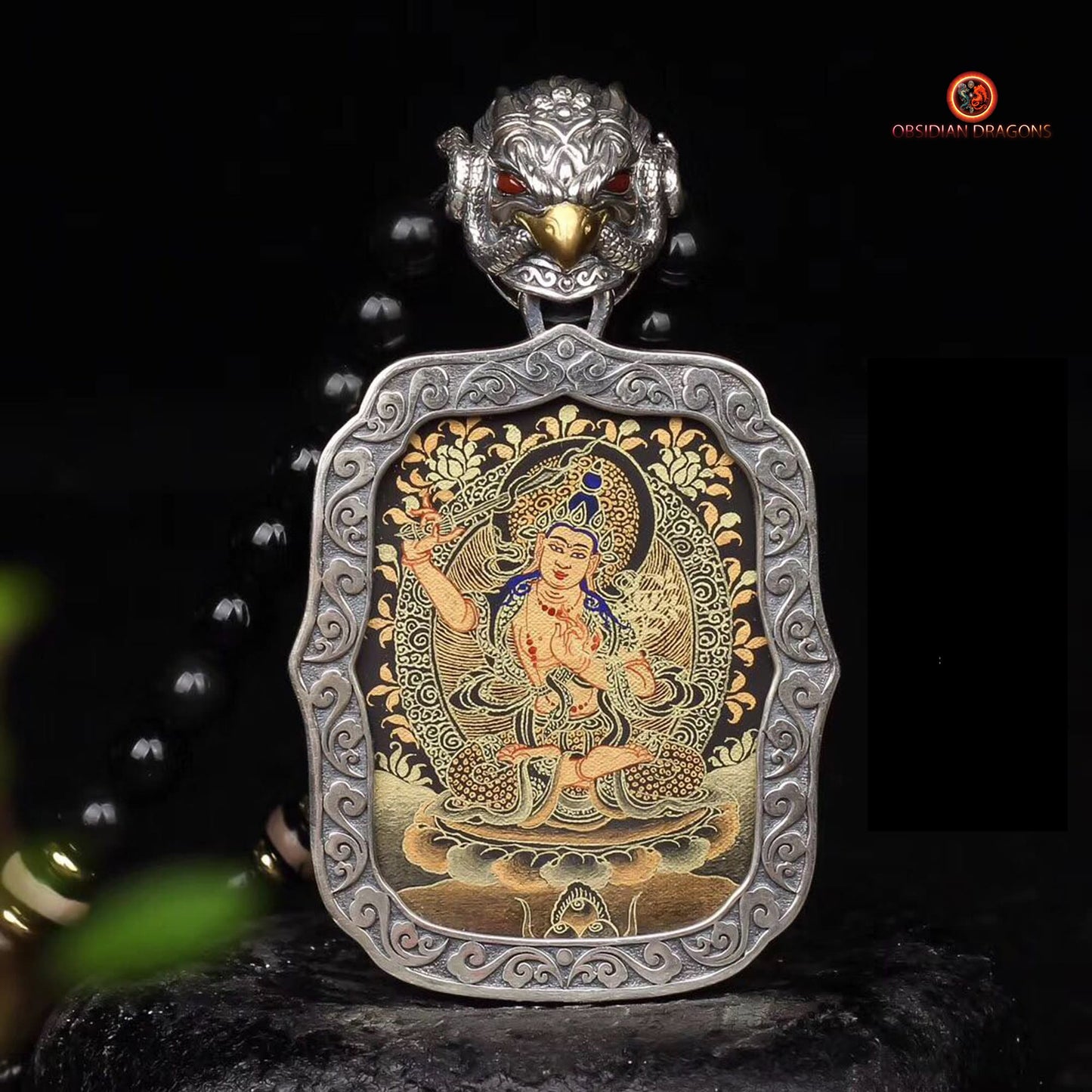
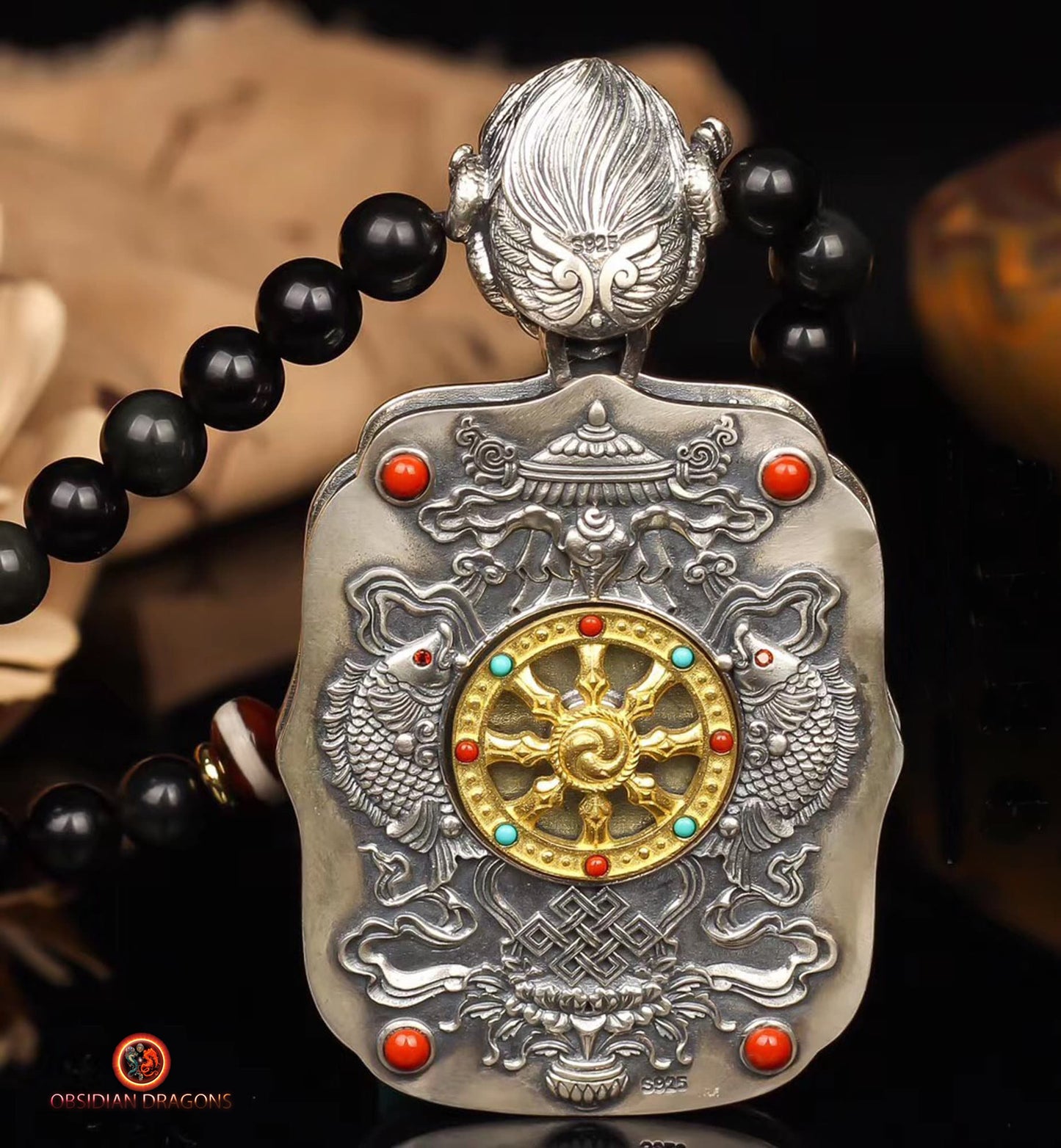
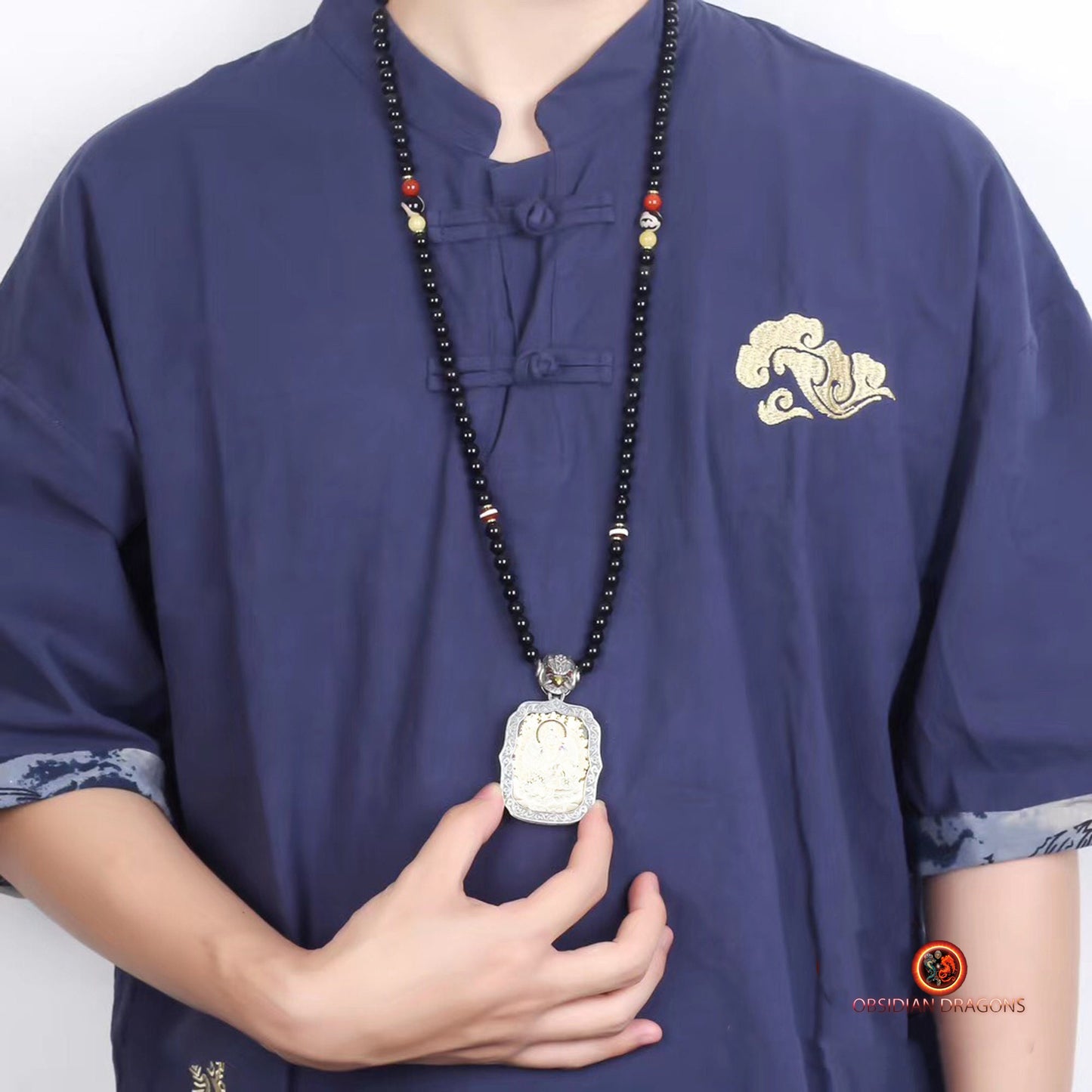
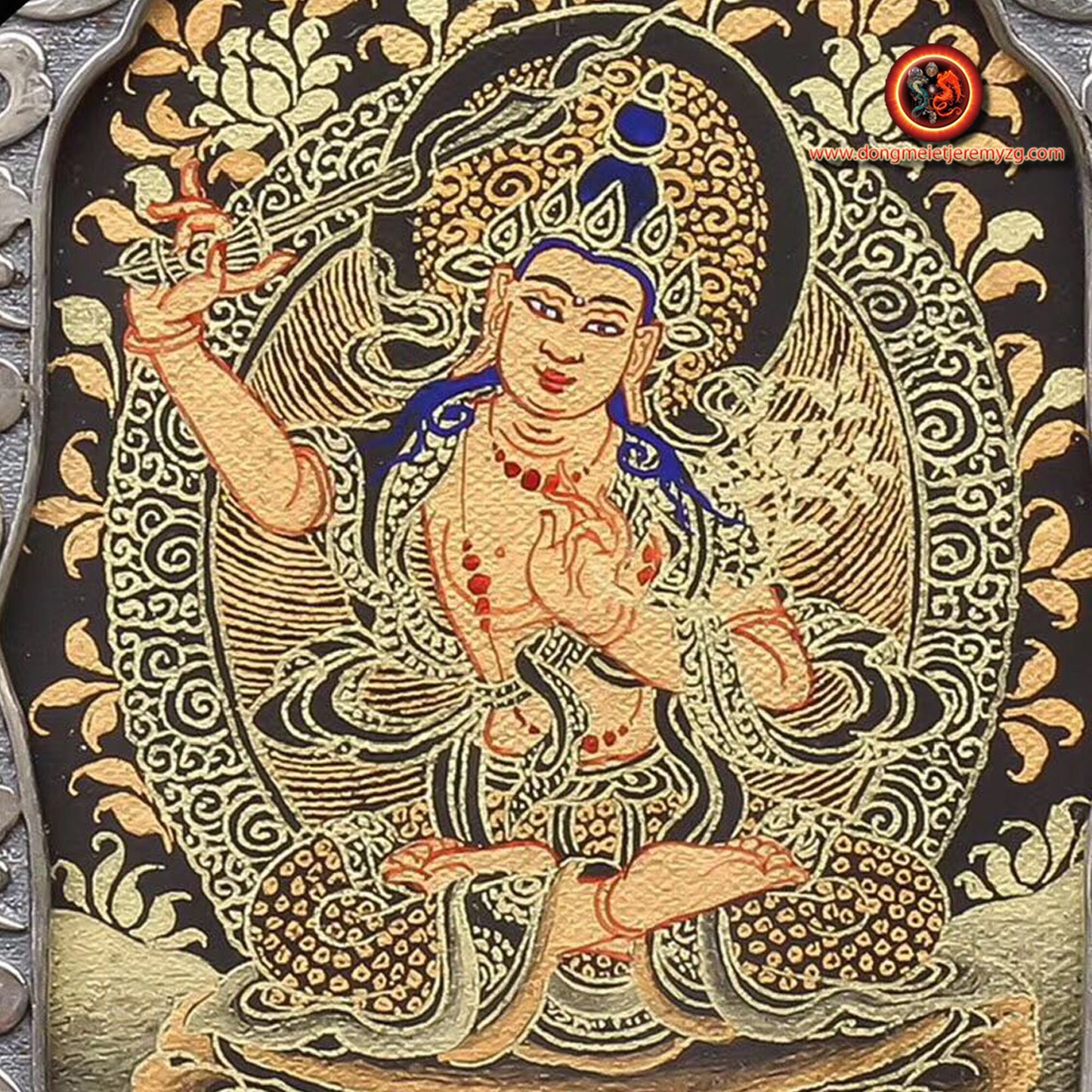
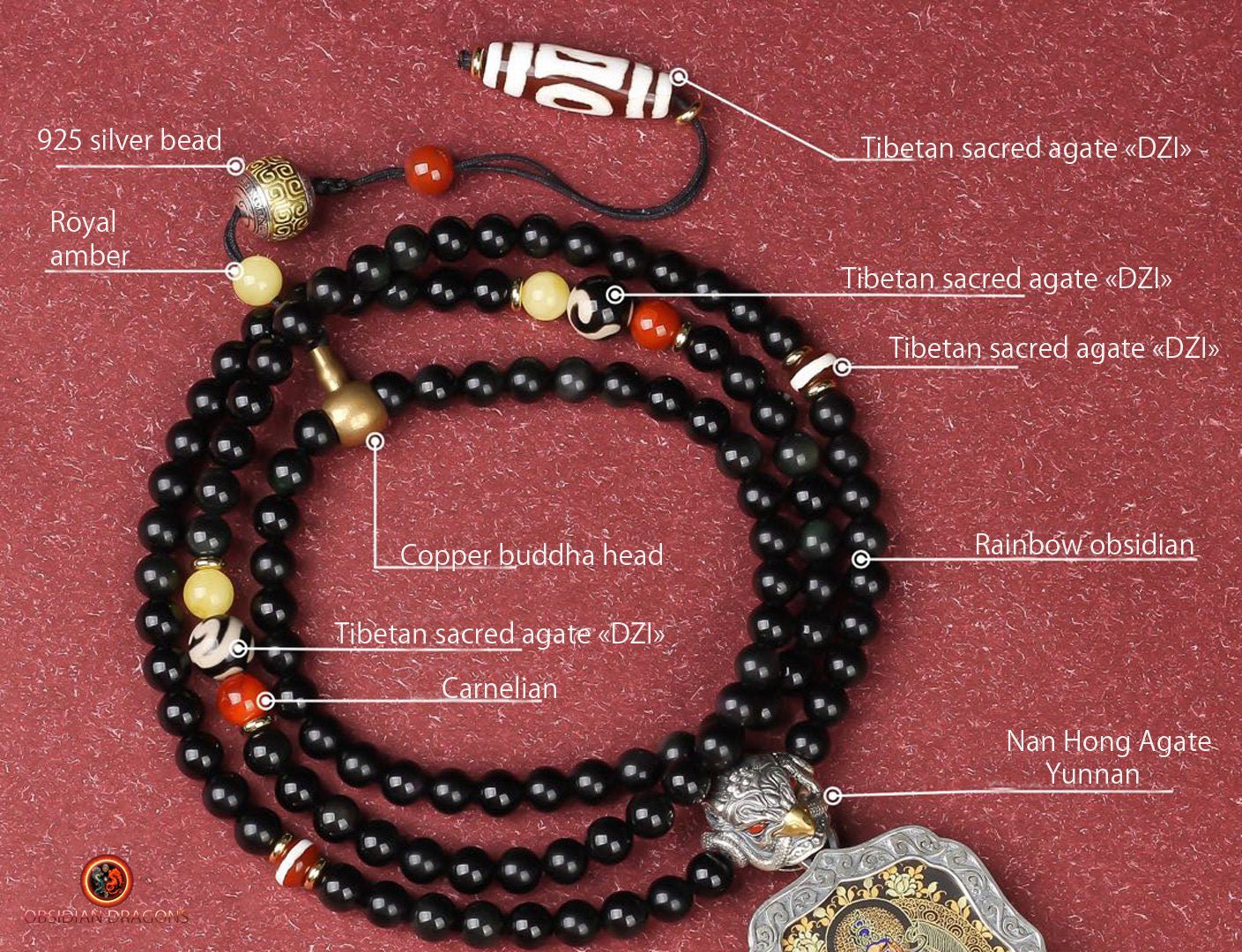
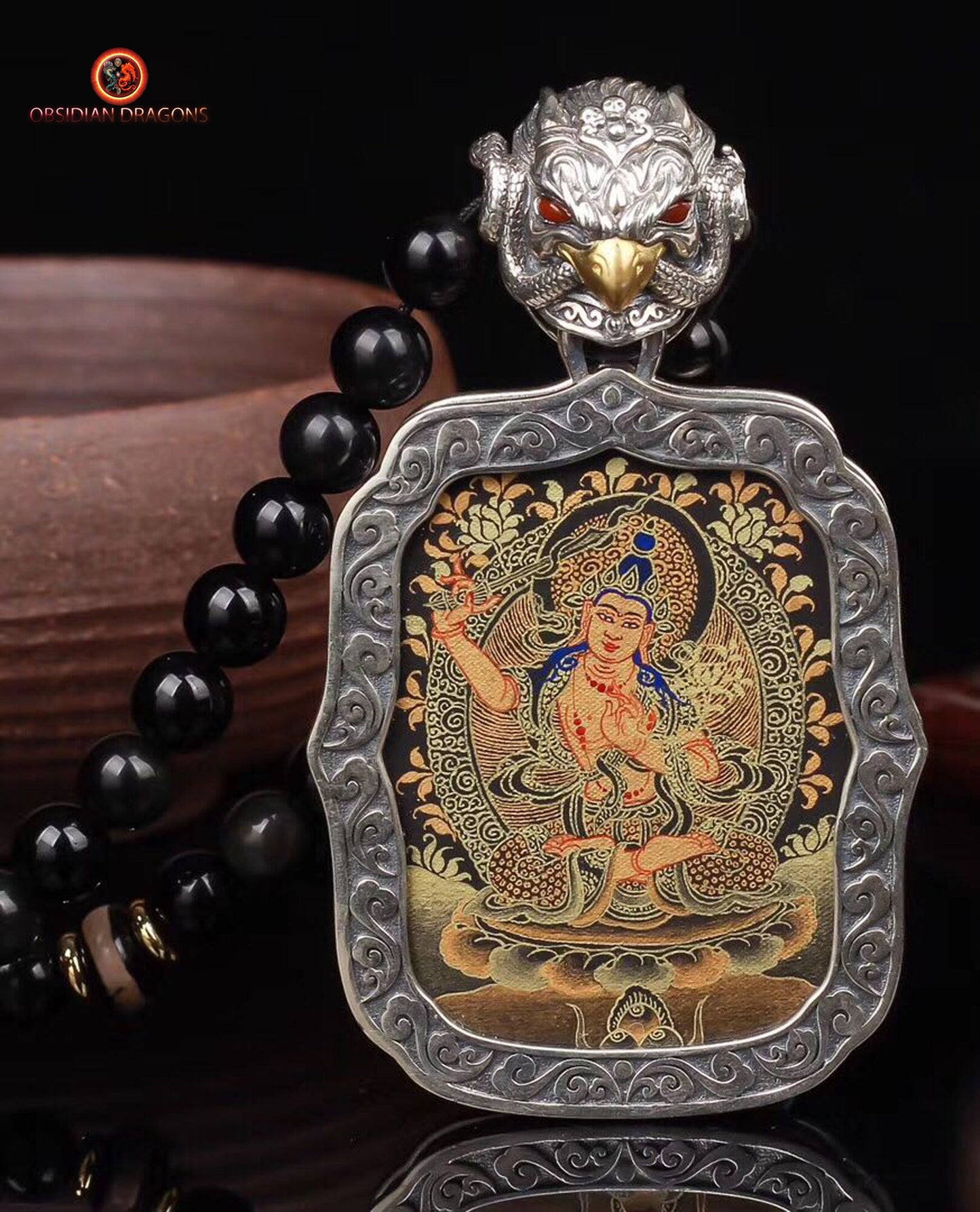
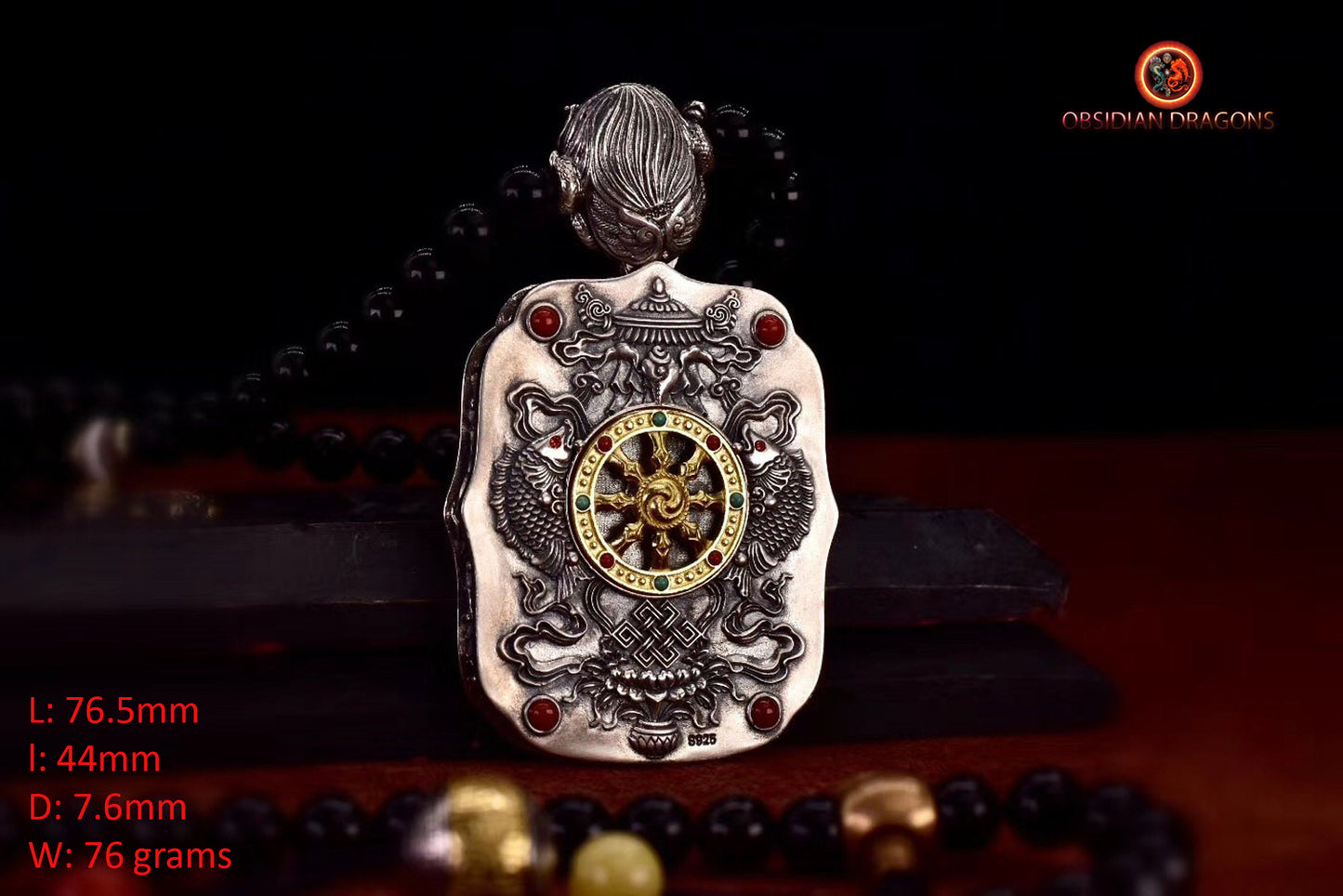
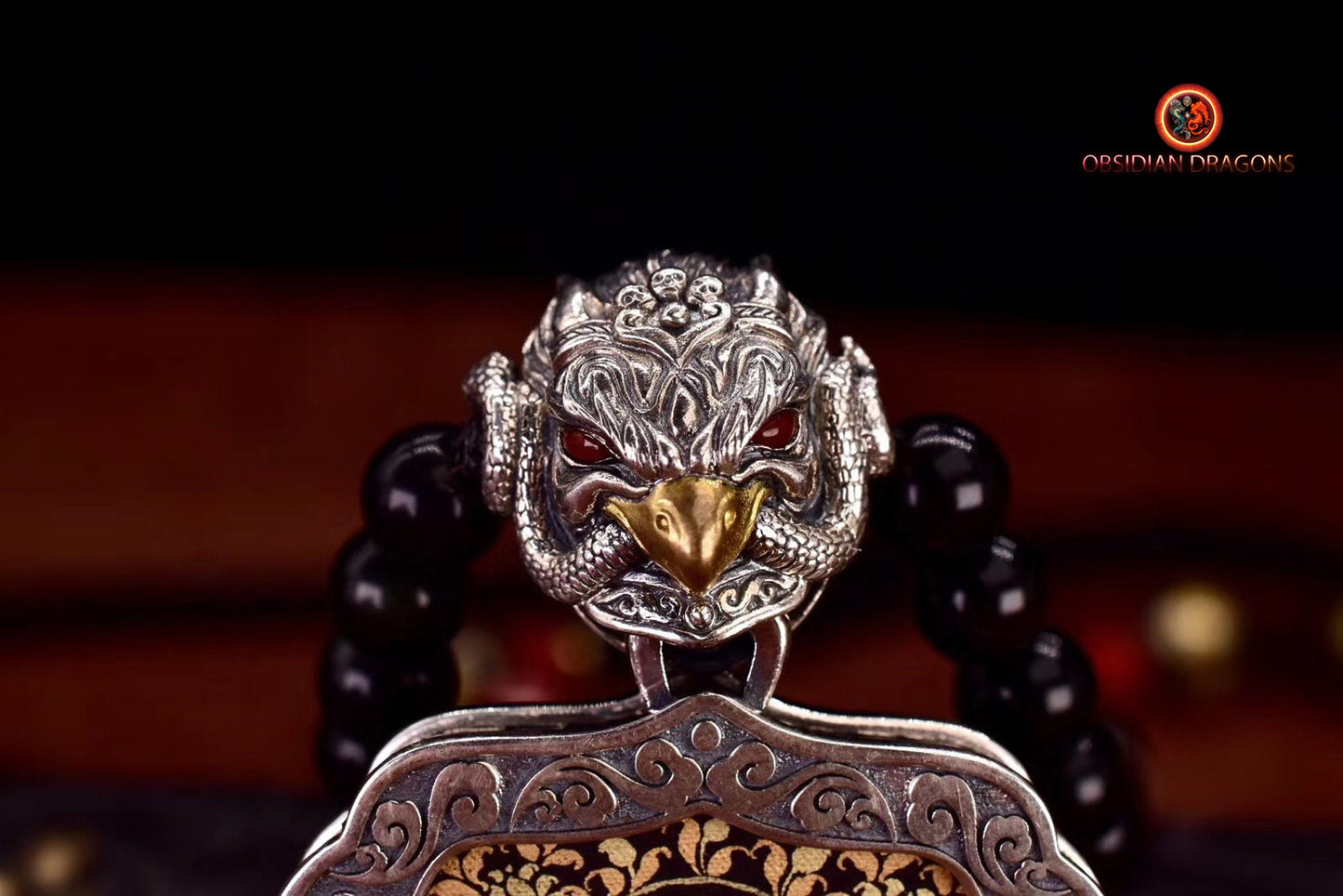

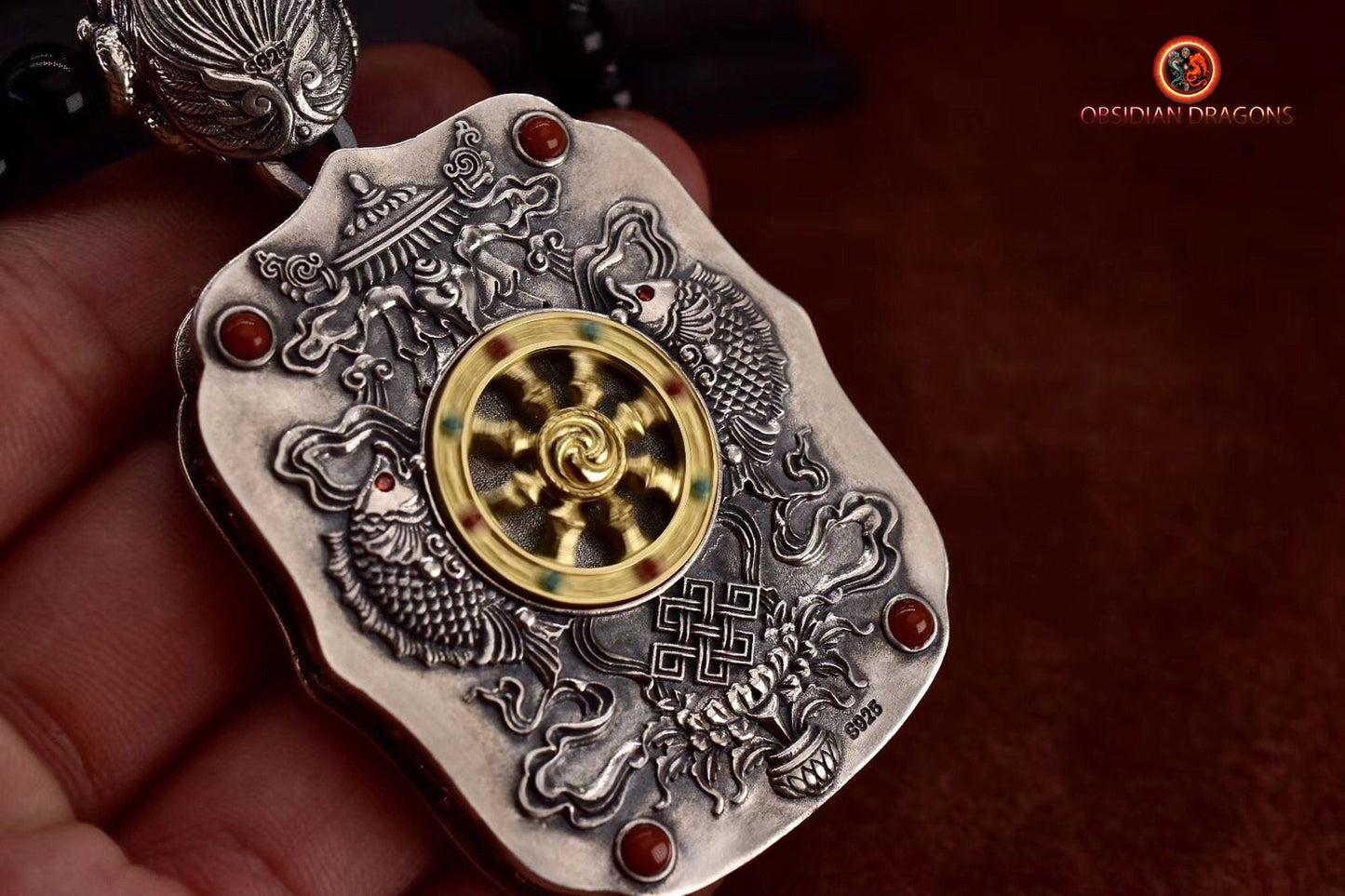

Return conditions for a Zen purchase
We offer you a money back guarantee within 14 days after delivery of your order.
If you are not completely satisfied with your purchase, please contact us to arrange a return of the product and a refund.
Except for returns, shipping is free on all orders.
Multi-column
Button text-
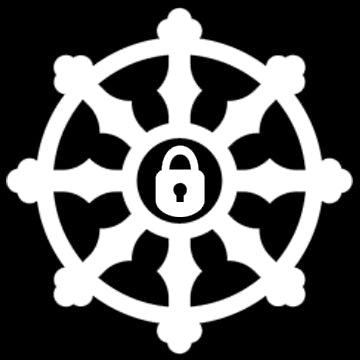
100% secure payment
3 times interest-free option with Scalapay
-

Free delivery in France and internationally
14 days money back guarantee after delivery (see our conditions of sale)
-

Column
Excellent customer service
Live chat
Whatsapp +33674049312
Let customers speak for us
from 917 reviews4eme pièce que j'achète et encore une fois, jamais déçue de l'unicité et de l'originalité. Coup de cœur pour ce bracelet en magnifiques molaires de mammouth, charge de vie et d'histoire. Attention pour un tout petit poignet de fille comme le mien cela peut être trop grand. N'hésitez pas à poser la question à Jeremy sur les tailles, il répond toujours et il est très réactif.

Déjà j’au été très impressionné par la qualité du site web pour tout chercheur de vérité mais également pour la disponibilité de Jérôme qui a su dépasser mes plus grandes attentes pour la commande sur mesure d’un mala en Obsidienne Œil Céleste – Dragon & Bagua Feng Shui. Gràce à ce puissant talisman je peux désormais continuer ma route sereinement. Un très grand merci sincèrement.

magnifique, puissant et apaisant, il m'aide à garder mon calme je le trouve absolument parfait!

J'ai eu l'occasion de rencontrer Jérémy sur Paris avant l'achat...très bon contact avec lui ..il sait de quoi il parle...je suis revenu vers lui pour l'achat de cette magnifique statue...elle a été emballee avec beaucoup de soin pour une expédition de chine... vraiment très satisfait de cet achat..merci

Pendentif dragon en obsidienne œil céleste - Symbole spirituel

Le collier est superbe, et ce pendentif magnifique, ses détails! et l'odeur du bois de santal que c'est agréable! Qualité extra! Contact excellent avec Jérémy, merci beaucoup pour votre gentillesse! Quelle qualité, vivement le mala !

L'objet est très joli et malgré que je ne sois pas un spécialiste, je trouve que le crystal est beau. Il n'est pas parfait et cela me rassure sur la qualité du produit qui est sensé être naturel donc imparfait.
Très bien emballé et en plus housse de rangement offerte.
MERCI

J’ai commandé un crâne de dragon, il est super beau et très puissant. Je l’adore 😍 Et l’envoi a été très rapide 🤗 merci 🙏🏻

bracelet puissant, je suis content de mon achat

Cet artisan est gémologue, il travaille avec des artisans qui sont des vrais artistes, je suis bluffé par la qualité des ouvrages sur l’argent et sa qualité. Quand à la qualité des pierres pas besoin d’être gémologue pour voir la qualité exceptionnelle des pierres, encore une fois le travail de sculpture est exceptionnel.
Mon mala traditionnel est une pure merveille dans la tradition originelle. Le ghau est une merveille qui me comble.
Bref que dire de plus :). Allez sur son site.
PS : vendeur qui connait son métier et les traditions bouddhistes ce qui est un plus en plus :)

Ce crâne est un Etre de Lumière. Attirant , inspirant , "parlant".
Il est un Ami qui tire mes pensées vers le Haut.
Ses énergies vibrent à des fréquences élevées. Il est puissant dans la douceur.
Un crâne de Dragon m'assite également. Merveilleux !

Très beaux bracelet et très puissants

Magnifique crâne givré de l'Himalaya.

cette chevalière est tres bien réalisé, avec beaucoup de détails, je suis heureux de l'avoir

